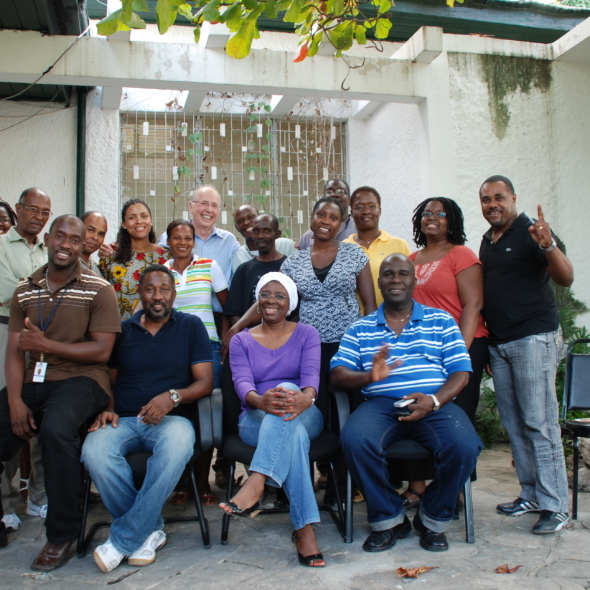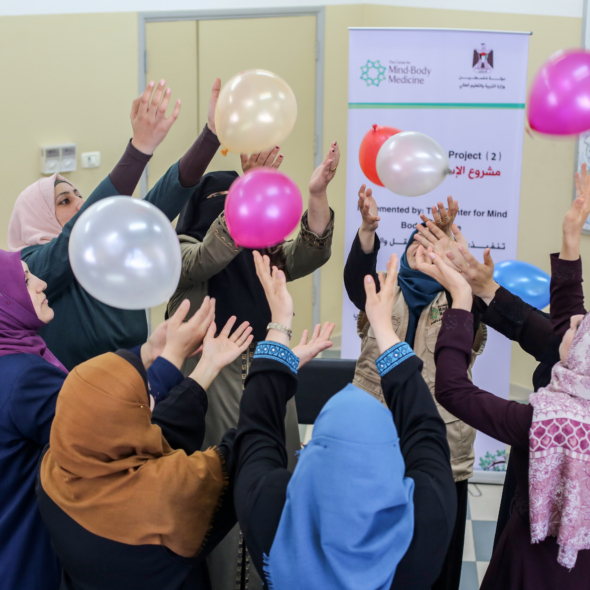
Juneteenth celebrates the freeing of more than 250,000 enslaved Black people in the state of Texas on June 19, 1865. In 2021, the U.S. Senate unanimously passed the bipartisan Juneteenth National Independence Day act, which President Joe Biden signed into law, designating June 19th as a federal holiday—one that serves as both a solemn reminder and a celebration. Juneteenth is a day to look into the past, acknowledging the historic stain of slavery and its legacy of systemic racism. It’s a day to look to the future, and a call to action for the important equity and justice work that remains ahead. And, importantly, it’s a time to center Black joy and and achievement in the here and now, as we celebrate freedom, resilience, and hope.
The Smithsonian National Museum of African American History and Culture (NMAAHC) describes Juneteenth as “an opportunity to gather with loved ones and community members to honor the present moment while also reflecting on a difficult past.” Inspired by NMAAHC’s 2023 Juneteenth theme—“Senses of Freedom: The Taste, Sound, and Experience of an African American Celebration”—we’re sharing three mind-body practices that can help you tap into your five senses and honor the present moment.
Before you try a practice, it can help to “check in” with yourself to see what your needs are. These two mind-body moments led by CMBM Faculty Members Carol A. Penn, DO, FACOFP and Sabrina N’Diaye, PhD, LCSW-C, MDiv can help you pause and reconnect with the mind and body through Soft-Belly Breathing.
Sight: Drawings
You don’t need to be an artist feel the benefit the mind-body practice we call “Drawings.” This self-expression exercise is actually a form of concentrative meditation. When we draw, we can bypass the doubts that limit our hope and the fears stored in the amygdala, stay in the present moment, tap into our intuitive wisdom and creativity, and imagine new possibilities. It’s a safe, fun way to express any thoughts and feelings that may arise on this meaningful holiday, without needing to rationalize or find the right words.
Explore our guided Drawing practice to learn what’s possible when you put pen to paper. You might just see your vision for a healthier future.
Sound: Shaking and Dancing
Do your Juneteenth plans involve music? If so, involve your friends and family in our Shaking and Dancing guided practice!
A form of expressive meditation, Shaking and Dancing can help you gain increased awareness in your body and shed any stress and tension you may be holding. It’s a three-phase exercise that includes a few minutes of intense, disruptive effort (“Shaking”), followed by a pause to breathe and notice how you feel, and then a few more minutes of free movement (“Dancing,” or simply “Movement”).
Put on your favorite song (or pick one from NMAAHC’s Juneteenth playlist on Tidal or YouTube, and get moving!
Smell/Touch/Taste: Mindful Eating
The human brain is hardwired with a survival instinct that governs our attention to the world around us. In an effort to protect us from threats, our brains focus more attention on negative stimuli than positive stimuli. This means that negative things naturally have a greater impact on our psychological state than neutral or positive ones. When you factor in the way that trauma and stress keep us on high alert, it gets even tougher to notice the pleasant moments and turn them into memories. Mindfulness techniques can help us practice savoring the moment.
Mindful eating invites us to bring relaxed, moment-to-moment awareness to the act of eating. If you’d like to try it for yourself, you can follow along with our guided practice while eating a favorite Juneteenth treat. Take time to observe the sensation of eating—the aroma, texture, and flavor of your food, too! By attending to our senses as we savor each bite, we can increase our connection to our bodies and the present moment, which gives our brains a better chance of saving a pleasant memory.
—
Trauma comes to us all, but we can find relief and build resilience by practicing self-care and finding support in our communities. Browse our Self-Care Basics or Mind-Body Resources for more guided practices. If you enjoyed these practices, consider learning more about our training programs.


